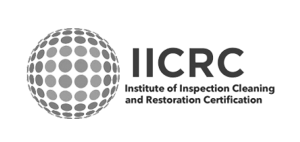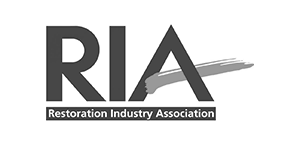Ever wondered why mold seems to creep up so quickly after water damage? Mold and mildew thrive in damp places and can start growing in just 24 to 48 hours. With more water damage happening, it’s key to know how to get rid of mold.
These fungi can damage buildings and harm your health. They can cause breathing problems and brain issues. It’s important to act fast to stop mold from growing and protect your health and home.
Key Takeaways
- Mold infestations typically occur in damp areas like crawlspaces, attics, and poorly-drained basements.
- Bathroom fans should clear moisture within 5 to 10 minutes; recommended capacity is calculated by multiplying bathroom square footage by 1.1 for 8-ft. ceilings or 1.5 for 9-ft. ceilings.
- A bleach solution of 10% bleach and 90% water can be effective for mold removal, allowing a 10-minute sit time before rinsing.
- Concrobium, a nontoxic mold control product, is effective when used every few months and costs about $10 for 22 oz.
- Floodwaters may contain toxic chemicals and dangerous bacteria, necessitating safety precautions during cleanup.
Understanding Mold Growth After Water Damage
After water damage, mold can grow quickly because of moisture and bad air flow. It can start to grow on wet surfaces in just 24 to 48 hours. Without fixing the moisture problem, mold will keep spreading.
Black mold and Stachybotrys atra are very harmful. They can grow on wet materials that have cellulose.
Mold can cause health problems, from mild allergies to serious breathing issues. People like infants, kids, and those with weak immune systems are at higher risk. Symptoms include coughing, wheezing, and skin problems.
To stop mold, it’s important to keep humidity low and use dehumidifiers. Clean and dry affected areas quickly, within 24-48 hours. Let wet areas dry completely before rebuilding.
Using mold-resistant materials helps prevent mold. For small areas, a bleach solution can work. But for bigger areas, get a professional to remove the mold.
Check for mold often, especially after water damage. Use air conditioners and dehumidifiers to control humidity. Remove wet items and porous surfaces to stop mold.
Fixing water damage fast is key to stopping mold and keeping healthy. If mold is bad, get a pro to clean it up. Testing for mold helps find and fix the problem.
What Kills Mold from Water Damage?
To fight mold, you must find and stop the moisture that feeds it. Mold can grow in a flooded home in just 24 to 48 hours. So, it’s crucial to act fast. Cleaning non-porous surfaces with soap and water or a 10% bleach solution works well.
For big or toxic mold problems, the EPA suggests calling a mold removal expert. These pros use special methods and safety gear. They make sure mold is fully removed and won’t come back. The U.S. National Flood Insurance Program says one inch of flood water can damage property a lot.
Preventing mold is just as important. Good ventilation, fixing water leaks quickly, and keeping humidity below 50% help a lot. Regular upkeep, quick repairs, and working ventilation systems like a good bathroom fan are key. A bathroom fan should clear moisture in 5 to 10 minutes to be effective.
Using a squeegee on shower walls can remove about 75% of moisture. This helps prevent mold. For surfaces that often get mold, using mildewcide in paint can help control it. The Federal Emergency Management Agency says to dry a place for two to three days before rebuilding after water damage. Quick action and ongoing care are essential to remove mold and stop it from coming back.
Conclusion
Managing and removing mold from water damage needs quick action and sometimes professional help. Mold can grow fast, within 24 to 48 hours after water damage. This makes the first 48 hours crucial for removing water and drying to stop mold.
Knowing what makes mold grow and the health risks it poses is key. Some molds, like black mold, can cause serious health issues. These can include neurological problems and even death.
Homeowner’s insurance often covers mold damage from sudden events. The cost for remediation can be between $1,000 and $10,000. But, policy details might limit coverage to about $5,000.
Getting help from experts like Shambaugh Restoration is very helpful. They offer solutions and ways to prevent mold. Using mold-resistant materials during repairs can also help a lot.
Remediation costs can vary, but acting fast is important. It ensures long-term benefits. Signs of mold, like discoloration and musty smells, should not be ignored.
Health symptoms like sneezing, rashes, and chronic coughing are also warning signs. Professional help is essential for dangerous molds or big infestations. By following prevention tips and knowing about insurance, homeowners can protect their homes and health from mold.






